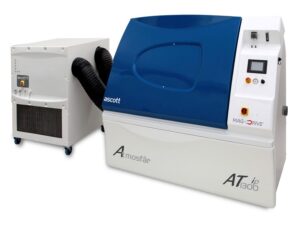Scania STD 4319 Corrosion Testing Standards

Scania STD 4319 Accelerated Cyclic Corrosion Testing in our Atmosfar Chambers at Aerofin Labs UK.
The test standard summaries are for general guidance only. Though believed to be accurate at the time of writing, this may change over time. This information should not be used as a substitute for referring to a complete test standard, at an appropriate revision level.
Please Note: the terms salt spray, salt mist and salt fog are all in wide spread use within corrosion test standards. In this context they can be considered to be equivalent and interchangeable terms.
Scania STD 4319
Scania Accelerated Corrosion Test

Scania STD 4319 Corrosion Testing Standards – Accelerated Cyclic Corrosion Testing by Aerofin Labs UK
The Scania STD 4319 standard defines an accelerated corrosion testing method to be used in assessing the corrosion resistance of metals in environments where there is a significant influence of chloride ions, mainly as sodium chloride by winter road de-icing salt or from a marine source. It specifies a test procedure to be used in conducting the accelerated corrosion test to simulate atmospheric corrosion conditions in a controlled way.
The 7 day main test cycle is composed of two twelve-hour sub-cycles, one with controlled humidity cycling, the other including salt solution application.
Sub cycle 1
Sub cycle 1 of Scania STD 4319 requires four hours of constant conditions at 35°C & 95% RH. This is followed by an increase in temperature to 45°C whilst also reducing the humidity to 50% over a 2 hour period. This is followed by constant conditions of 45°C & 50% RH for four hours. Lastly there is a 2 hour period of transition to 35°C & 95% RH.
Sub cycle 2
Sub cycle 2 of Scania STD 4319 requires spraying with salt solution for 15 mins then subjecting the samples to 35°C for one hour forty five minutes whilst maintaining a relative humidity of 95% – 99% RH to ensure the test samples remain wet. These steps are repeated to give a total period of 6 hours. This is followed by drying at 45°C & 50% RH for a two hour period followed by a further 2 hours of 35°C whilst maintaining 95% RH.
This test is also referred to as a Cyclic Corrosion Test, often abbreviated to CCT, and is based on Volvo 423-0014.


